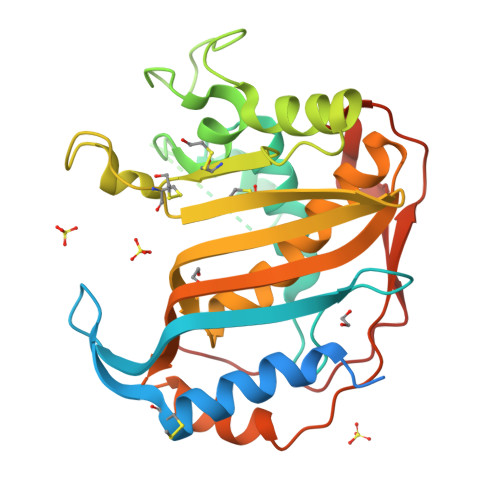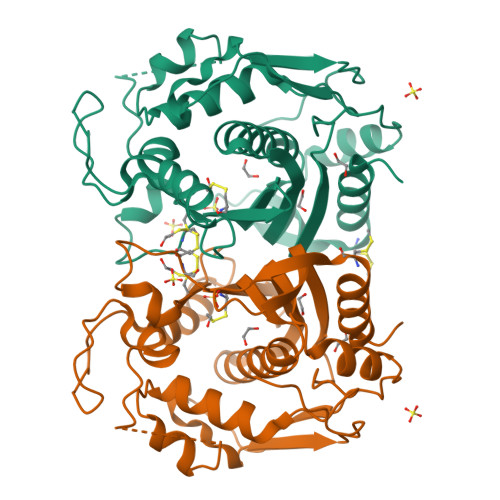Hotspots in an obligate homodimeric anticancer target. Structural and functional effects of interfacial mutations in human thymidylate synthase.
Salo-Ahen, O.M., Tochowicz, A., Pozzi, C., Cardinale, D., Ferrari, S., Boum, Y., Mangani, S., Stroud, R.M., Saxena, P., Myllykallio, H., Costi, M.P., Ponterini, G., Wade, R.C.(2015) J Med Chem 58: 3572-3581
- PubMed: 25798950
- DOI: https://doi.org/10.1021/acs.jmedchem.5b00137
- Primary Citation of Related Structures:
4JEF, 4KPW - PubMed Abstract:
Human thymidylate synthase (hTS), a target for antiproliferative drugs, is an obligate homodimer. Single-point mutations to alanine at the monomer-monomer interface may enable the identification of specific residues that delineate sites for drugs aimed at perturbing the protein-protein interactions critical for activity. We computationally identified putative hotspot residues at the interface and designed mutants to perturb the intersubunit interaction. Dimer dissociation constants measured by a FRET-based assay range from 60 nM for wild-type hTS up to about 1 mM for single-point mutants and agree with computational predictions of the effects of these mutations. Mutations that are remote from the active site retain full or partial activity, although the substrate KM values were generally higher and the dimer was less stable. The lower dimer stability of the mutants can facilitate access to the dimer interface by small molecules and thereby aid the design of inhibitors that bind at the dimer interface.
Organizational Affiliation:
†Molecular and Cellular Modeling Group, Heidelberg Institute for Theoretical Studies, 69118 Heidelberg, Germany.




















